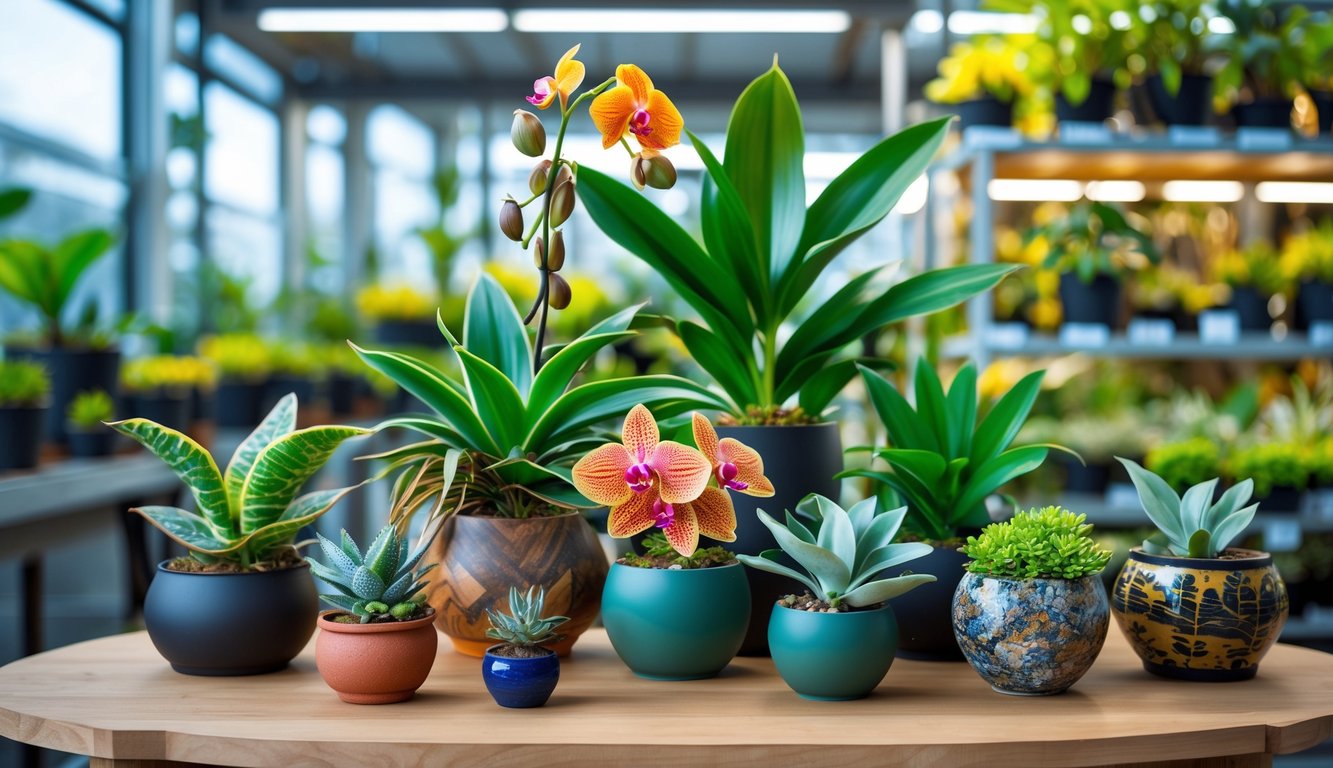
Top Rare Plant Varieties Driving Resale Profits
Whenever money starts flying in the rare plant world, it never makes sense. It’s almost never about beauty or actual botanical value—it’s just scarcity, hype, and, honestly, dumb luck. I watch people scramble for cuttings like it’s Black Friday, but by tomorrow, someone’s probably cloned a thousand more.
Monstera Deliciosa ‘Thai Constellation’
I watched someone drop $800 on a tiny ‘Thai Constellation’ last year. Did it look special? Not really. Same variegated monstera leaf you see everywhere, but those creamy splotches make people lose their minds. Monstera deliciosa—especially this one—gets marked up like crazy because commercial labs can’t keep up (Kew Gardens says tissue culture’s unpredictable, which seems ridiculous in 2025). Growers brag online that a single healthy, fenestrated leaf adds $200 to the price, but half the time, you just get root rot.
The “constellation” pattern never repeats. I’ve had three: stripes, almost all yellow, one just… sad. Instagram’s full of advice—“bright indirect light,” “moist but not soggy”—and everyone thinks they’ll get rich selling well-rooted cuttings. I overheard a big-box worker mutter, “It’s just a cheese plant; we toss dozens monthly.” And, honestly, if it weren’t this one, they’d be right.
Philodendron Pink Princess
Don’t fall for the hype. Philodendron Pink Princess can go green overnight. Actual horticulturist told me, “Variegation is genetic roulette.” I’ve seen so many failed hybrids. Pink splotches look cool, but plants revert all the time.
Not rare in the wild, but good luck finding one with perfect pink at a price that isn’t insulting. People gossip about tissue-culture flooding the market and crashing prices, but the second a good pink one pops up on Instagram, prices bounce back. Aroid collectors in Discord talk about which growers don’t scam or ship plants crawling with gnats. My own cuttings sold faster than the last Hoya kerrii craze. Even with all the “expert” lighting tricks (“don’t put it in direct sun or it’ll bleach!”), nobody gets consistent results.
Rare Alocasia and Hoya Species
You want drama? Get an Alocasia. My Alocasia frydek variegata needed three humidifiers, a grow tent, and an electric bill that made me question my life choices. Still, I’d sell it for double what I paid. Collectors chase every mutation—“Dragon Scale,” “Silver Dragon”—because everyone thinks theirs is the only one. RHS even admitted (kind of grudgingly) these still top aroid wishlists, even though they’re spider mite magnets.
Hoyas? Oh, they’re personal. I spent years hunting “Silver Splash” forms, then my friend’s grandma hands her a wild Hoya nobody’s ever catalogued. Hoya collectors obsess over leaf markings, not flowers. Prices for Hoya callistophylla and macrophylla variegated spike just from word-of-mouth in trade circles—never at regular garden centers. I track prices in old Facebook sales groups. Sellers drop weird fungus warnings (“athlete’s-foot” fungus, whatever that is—not contagious to people, right?). Bottom line? Everyone thinks their rare aroid, hoya, or Alocasia is about to skyrocket in value. There’s always another auction to prove them wrong.
Why Collectors Are Earning More From Rare Plants
So my neighbor (the one who thinks $30 is wild for a pothos, bless him) keeps asking why Hoya callistophylla prices doubled out of nowhere. Honestly, I don’t get it either. I mean, sure, demand’s up—shops barely keep anything rare in stock, and since the lockdowns, it’s like everyone’s lost their minds over aroids. But it’s not just that. The bidding wars? Completely unhinged. I watched a Monstera albo cut go for more than my car payment. People treat these things like investment sneakers, not plants. Fittonia? Nobody cares anymore. It’s all about flexing the rarest leaf.
Market Trends and Price Surges
Sometimes I doomscroll plant groups at 2AM (don’t judge), and someone’s Anthurium velvet leaf jumps from $45 to $350 in, what, three weeks? It’s nuts. Remember when Bunnings had those “exclusive” plants last year? That threw everyone into chaos. Prices for Alocasia azlanii hit $500 in 2021—still high, even now. It’s like, after lockdown, people stopped baking bread and started hoarding rare foliage instead.
I saw this University of Queensland study from late 2024—apparently, houseplant hype tripled rare plant resale profits since 2019. Not surprised. Scarcity plus FOMO equals sticker shock. I’ve seen auction charts where variegated plants go for two, three times retail. Nobody factors in that half of them die in shipping—my Alocasia black velvet? RIP. But whatever, people just want the flex.
Profit Margins for Rare Varieties
Some sellers brag about 500% markups, but if you do the math—cutting sells for $60, rooted division goes for $300, minus fees, and you’re still laughing. It’s not even about selling tons. One rare Hoya polyneura ghost and you’ve got groceries for weeks. Hot take: propagating rare Syngonium is mostly about catching the right Instagram trend, not skill.
Saw a guy dump a table of Philodendron spiritus-sancti cuttings at a swap meet and walk away with over $2,000. No one even blinked. Collector groups literally plan releases around TikTok trends. Gardening never used to be like this—my aunt’s fern collection in the ‘70s? Couldn’t even sell for pocket change. Now, people act like rare plants are stocks. Real tip? List stuff right after payday or school holidays. That’s when the bidding gets wild.